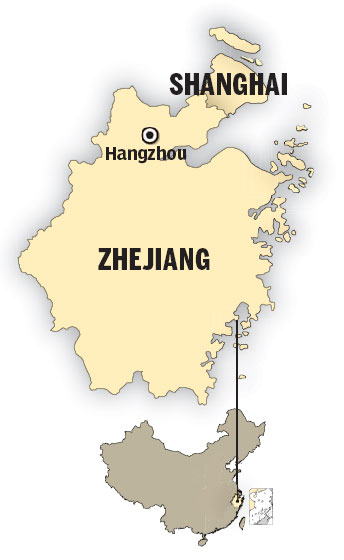R&D boosts province's quality of life
HANGZHOU - When the GDP of Zhejiang province exceeded 1 trillion yuan six years ago, there were worries that it was choosing quick profits at the expense of investment and sustainable development.
However, the need to generate comprehensive and sustainable growth soon became apparent to all concerned.
"We realized very early the importance of upgrading the economic model and started the transition in December 2007," said Zhao Hongzhu, secretary of the Zhejiang Provincial Committee of the Communist Party of China.
Since then, Zhejiang, which possesses just 1percent of the country's cultivated land, has begun to adopt a more sustainable economic model.
People used to associate Zhejiang manufacturing with low-end products and poor quality. While Zhuji city boasts 70 percent of the world's fresh water pearl yield, its output value is below 10 percent. Shengzhou city sup-plies 40 percent of the world's ties, without one single brand of its own for export.
Now many Zhejiang enterprises have started to invest in research and development as they acknowledge that large-scale production does not necessarily result in competitiveness and production capacity does not guarantee pricing power.
Despite the uncertainty of economic recovery after the global recession, Lu Zhixin, marketing manager of Zheji-ang Taitan Co Ltd, the prov-ince's leading textile machine producer, remains confident of the company's performance this year following the company's development of a new type of textile machine that he says is as good as imported ones at two-thirds the cost.
Likewise, Zhejiang's top furnace manufacturer, Shengzhou Furnace Factory won the 2009 Ashden Awards for Sustainable Energy in UK with a new fuel-efficient furnace and it has already sold over 60,000 in Asia, Europe and Africa.
Although Zhejiang's per capita income is among the highest in the country, gov-ernment officials are still working to increase people's income.
Improving people's liveli-hoods not only benefits the low-income population, but also propels the social econ-omy forward, officials said. For example, all the residents over 60 are provided with a basic pension of at least 60 yuan each month from 2010, said Qian Juyan, head of Zhejiang Provincial Department of Finance. .
"Local governments used to pay too much attention to the ranking of economy aggregates and GDP," said Qian, "We hope the local governments will compete in the input in improving people's livelihood and public service."
Statistics reveal the benefits resulting from the province's economic transformation.
Zhejiang's GDP for 2009 grew 8.9 percent to 2.28 trillion yuan ($334 billion). "Though the growth rate of Zhejiang's GDP is not among the highest, it is high quality," said Qian Juyan, who added that tax revenue accounts for 92.6 percent of the local fiscal revenue. Only Beijing and Shanghai can boast a higher percentage.
Rural residents enjoyed a per capita income of 10,007 yuan in 2009, making it the first province with a per capita income exceeding 10,000 yuan, an 8.1 percent year-on-year growth.
Urbanites' per capita income in 2009 was 24,611 yuan, an 8.3 percent increase on the preceding year.
Resource and energy con-servation is crucial to sustain the province's economic model. According to Zhejiang Provincial Department of Land and Resources, the consumption of new construction land for every 10,000 yuan GDP reclined by 4.83 percent to 9.1 square meters in 2009.
Furthermore, Zhejiang is also developing its tertiary in-dustry. The added value of its tertiary industry in 2009 reached 982,75 billion yuan, up 12.5 percent compared to the year before.
China Daily

(China Daily 05/01/2010 page7)














